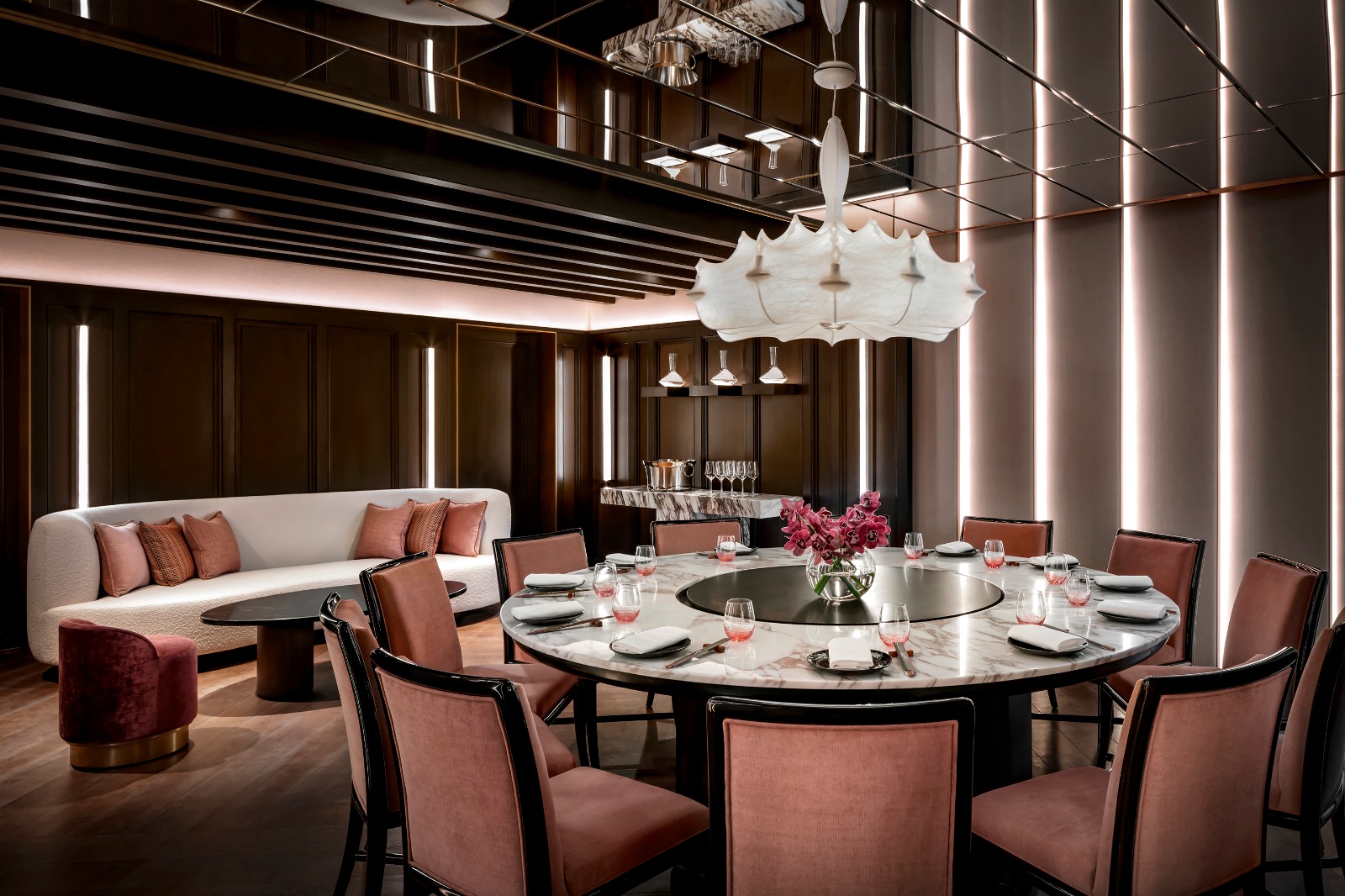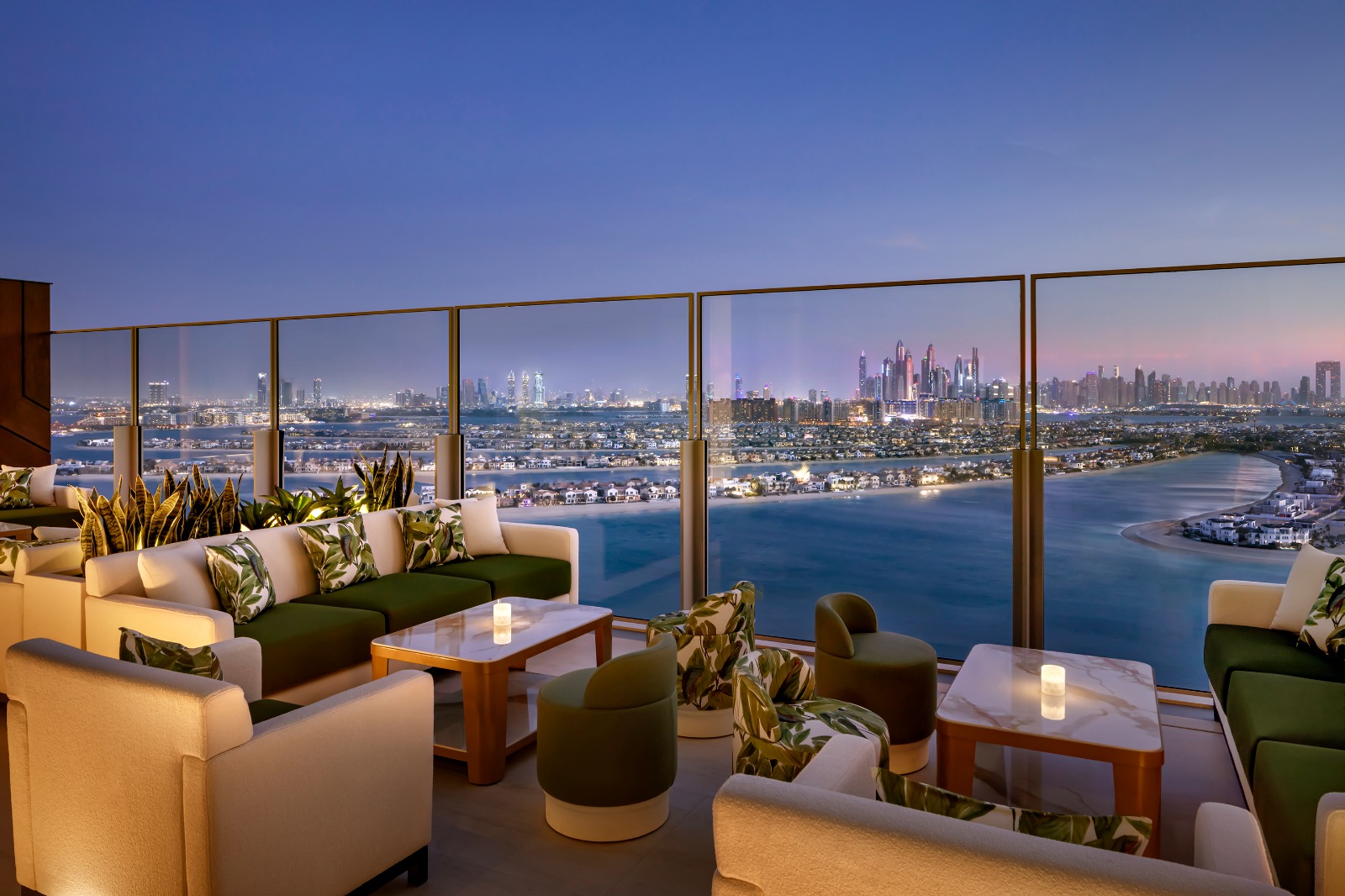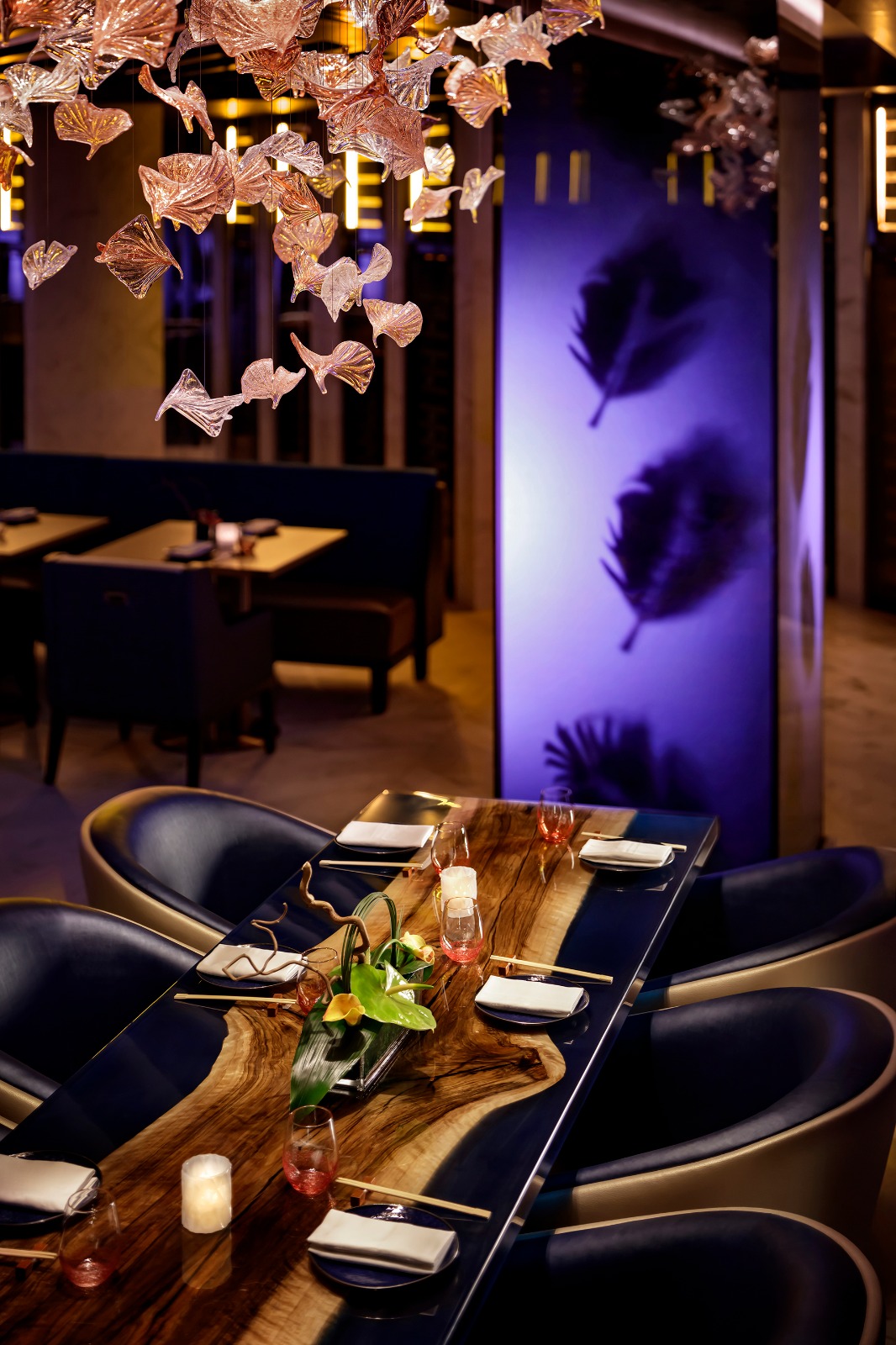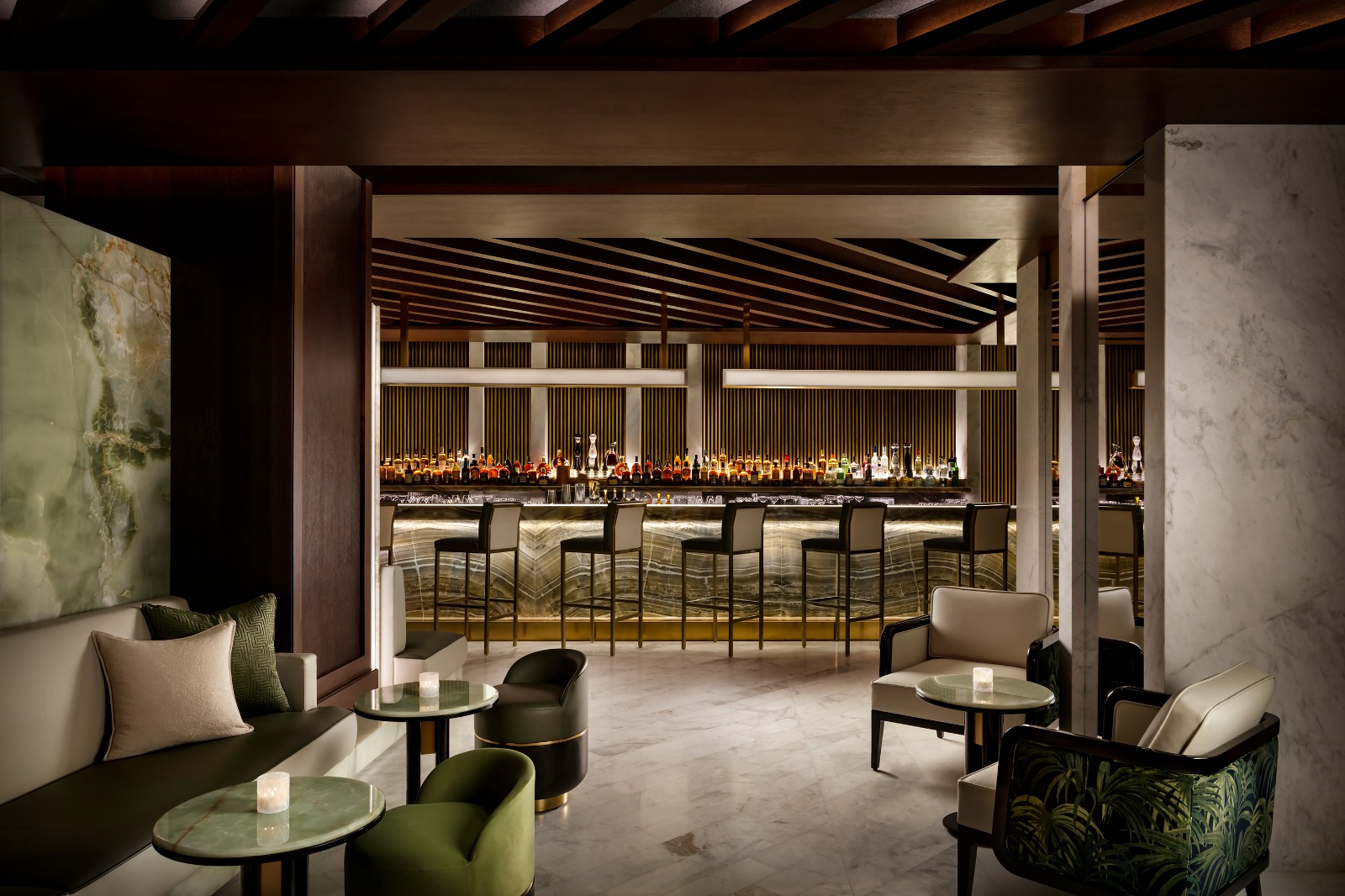
Frank Pena: Can you describe the overall dining experience at Ling Ling Dubai, from the moment guests walk into the moment they leave, highlighting the elements that make it a truly memorable experience?
Chef Steven Nguyen: Located in the crown of the world's most ultra-luxury resort, Atlantis The Royal – Ling Ling is Dubai's newest celebrity hotspot for the ultimate dining and entertainment experience. Upon arrival, guests are whisked up to the 22nd and 23rd floors. Creative cocktails can then be enjoyed in the expansive marble-rich bar, or guests can embark on a culinary journey in one of our two dining lounges, as well as a spacious terrace overlooking Cloud 22, with soaring views of the Dubai skyline and Arabian Gulf. The venue also features an elegant private dining room, as well as a discreet ultra lounge nestled in the heart of the venue, designed to offer you a more intimate and exclusive bar and nightlife experience.
Ling Ling encourages you to discover and explore cuisine differently. Inspired by izakaya, where food accompanies drinks (rather than the other way around), cocktails are at the heart of the experience with an intriguing and evolving menu. Ling Ling's culinary highlights fuse Japanese, Thai, Vietnamese, and Korean influences without leaving aside the Cantonese origins of Hakkasan that are present in every course. Ling Ling is designed to evolve from drinking to dining to dancing – in no particular order. Come early and stay late as we say.

FP: How do you use your personal touch into the menu? And what is your team main contribution to have a diversed food offering?
CSN: My style is a mixture of East meets West, filtered through a modern contemporary take on traditional foods. I’ve taken my classic chef training and applied it to Pan-Asian cuisine. I always ask myself when creating a dish; how can we make this better, all while respecting its roots.
In terms of the team, I’m fortunate to work with people from a variety of different countries including Thailand, Korea, Vietnam, Malaysia, and Indonesia. As the menu is a fuse of Japanese, Thai, Vietnamese, and Korean cuisines, with the Cantonese origins of sister restaurant Hakkasan, who better to bring this to life than talent from those very countries. I always tell my chefs it’s important to cook for yourself first and make sure you like it, that way you can be proud of what you create and will always be authentic.

FP: Can you provide some insight into the menu at Ling Ling Dubai? What are some of the standout dishes that guests must try, and are there any signature creations that you truly represent the essence of the restaurant?
CSN: The menu draws inspiration from the izakaya concept made popular in the East where food accompanies the drinks. At Ling Ling, we infuse part of Hakkasan’s Cantonese flair into each dish, whether that be ingredients, sauces, or the technique, interwoven with Japanese, Thai, Vietnamese, and Korean cuisine.
A dish like our Tomahawk Ssam is a great representation of what we do. We use Australian Wagyu, and serve it Korean family style, where it’s shared around the table served with lettuce wraps and “Banchan” or Korean side dishes. It’s about reinterpreting traditional Asian dishes, elevating them with the best ingredients, and having them served in a way that the whole table can share.

FP: How do you incorporate Dubai local flavors and ingredients into its dishes, while still staying true to its overall concept and culinary style?
CSN: As one of the world’s most popular international destinations and multicultural cities, Dubai has created a thriving culinary experience unlike any other around the world that caters to every palate. While we focus on contemporary Asian cuisine, we do incorporate quite a few local ingredients. For example, we use Bee pollen that’s harvested here in the UAE, and all our herbs and micro greens are grown in UAE in vertical farms.
FP: How do you ensure that the quality and freshness of its ingredients are maintained consistently, considering the high volume of diners it caters to?
CSN: A busy restaurant means you’re going through ingredients rapidly, and we are very fortunate to be very busy. The relationship with our suppliers is also an important one. They keep me up to date on what’s in season and they are a vital connection point between the producers and farmers to ultimately our diners.

FP: How does Ling Ling strive to create a lasting impression on its guests, leaving them with fond memories and a desire to return for future visits?
CSN: That really comes down to service and the spirit of hospitality. There is a Japanese concept called OMOTENASHI which is a way of anticipating and fulfilling guests’ needs before they are even expressed. To me Omotenashi makes you feel genuinely cared for in a holistic way, it’s a sense of being looked after. So, whenever I can, I try to escape the kitchen and speak to guests directly to find out what they like and how we can enhance their experience even more.
FP: How does Ling Ling cater to dietary restrictions and preferences, such as vegetarian, vegan, or gluten-free options, ensuring that all guests can enjoy a satisfying meal tailored to their needs?
CSN: We’re always mindful of different dietary requirements and offer a range of options including our Vegan XO Noodles with Truffles. We make an in-house XO sauce made from mushrooms, then use hand-cut noodles where the rippled texture is similar to a lasagna sheet, so it’s perfect to hold all the amazing sauce. Then we shave truffles on top to be extra luxurious. This is definitely a must-try. We’re also currently working on incorporating more vegetarian and gluten-free options, so watch this space.

FP: How do you stay ahead of culinary trends and constantly innovate its menu, keeping it fresh and exciting for both regular patrons and new visitors? Encompassing Dubais culinary competitiveness.
CSN: Traveling for me is the number one and most authentic way to find inspiration. Books, TV, Instagram, and TikTok videos can, yes, expose trends to wider audiences quickly, but that only scratches the surface. You need to be there, talk to people, and experience the different cuisines from the chefs who cook them with love and passion. I recently came back from a trip through Asia where I explored Thailand, Singapore, and Indonesia and I’m excited to look at incorporating some of the dishes and flavours I experienced into our menu.

FP: If you get to choose one specific dish that truly describe you - what is it and why? And why is this dish helps your on incorporating and the success of your career.
CSN: That would be our Cha Ca Seabass Skewer. It’s based on a traditional dish from Hanoi Vietnam called Cha Ca Hanoi. It consists of turmeric-marinated fish that’s paired with a lot of dill. The first time I had it was nearly 25 years ago during one of my first trips to Vietnam with my family. And it was a memory that stuck with me. It’s not a very well-known dish outside of Vietnam, but anyone who tries it loves the flavour combination. It’s a true joy for a chef to bring exposure to an underrepresented cuisine.


.jpg)







